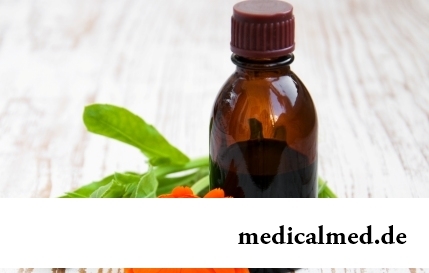





Platyphyllinum
Application instruction:

Platyphyllinum – the pharmacological drug from group of m-holinoblokatorov having spasmolytic and weak sedative effect.
Structure and form of release
According to the instruction Platyphyllinum is issued in ampoules in the form of solution for parenteral administration. In 1 ampoule of 1 ml of 0,2% of drug (2 mg of Platyphyllinum and water for injections).
Externally Platyphyllinum represents inodorous colourless transparent liquid.
This drug on 10 ampoules in a cardboard pack is produced, the application instruction, an ampoule knife or the scarificator is also attached. If in packaging of an ampoule with points or rings for opening, then the ampoule knife does not invest.
Pharmacological action of Platyphyllinum
According to the instruction Platyphyllinum is a blocker of m-holinoretseptorov and has spasmolytic effect concerning smooth muscles of a digestive tract and bronchial tubes, and also has weak sedative (soothing) effect. This drug reduces secretion bronchial, salivary, the lacrimal and sweat glands. Besides, Platyphyllinum is capable to expand a pupil and to cause moderate paralysis of accommodation. This drug can increase intraocular pressure.
Indications to use
Indications to Platyphyllinum are the following states:
- spastic pains of the alimentary system (hepatic colic, intestines dyskinesia, dyskinesia of biliary tract);
- complex treatment of a peptic ulcer of a stomach and duodenum;
- renal colic;
- bronchospasm at patients with diseases of respiratory system (as an auxiliary component of treatment).
Contraindications to use of Platyphyllinum
This drug has quite wide contraindications therefore its use without appointment of the doctor is inadmissible. Platyphyllinum is contraindicated for use at the following states:
- hypersensitivity to Platyphyllinum;
- closed-angle glaucoma;
- the expressed atherosclerosis, chronic heart failure of the II-III degree;
- disturbances of a heart rhythm, tachycardia;
- benign hyperplasia of a prostate;
- symptoms of a renal/liver failure;
- phrenic hernia with the phenomena a reflux esophagitis;
- intestines atony;
- gastrointestinal bleeding;
- ulcer colitis;
- advanced and senile age.
It is necessary to weigh carefully indications to Platyphyllinum during pregnancy and a lactation, at coronary heart disease, a mitral stenosis, arterial hypertension, a thyrotoxicosis, diseases of the alimentary system with the impassability phenomena (a stenosis of peloric department of a stomach, a gullet achalasia, etc.), the increased body temperature, age 40 years are more senior (there is a risk of not diagnosed glaucoma). Also with care it is necessary to use this drug at patients with nonspecific ulcer colitis, a myasthenia, an ischuria in the anamnesis, chronic diseases of lungs, a Down syndrome, cerebral palsy, and at patients of early children's age.
Route of administration and doses
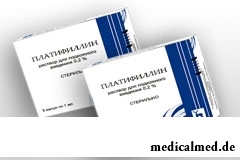
According to the instruction Patifillin it is possible to enter subcutaneously, intramusculary.
For stopping of the acute abdominal pains caused by hepatic or renal colic and also at a peptic ulcer, 2-3 times a day are recommended to administer the drug subcutaneously in a dose of 1-2 ml (2-4 mg). The course of treatment can make up to 10 days. The maximum daily dose for the adult – 30 mg (15 ml of drug), a single dose should not exceed 10 mg (5 ml).
Platyphyllinum is applied to children in the following dosages:
- till 1 year – a single dose of 0,035 mg/kg, maximum daily – 0,07 mg/kg;
- 1-5 years – a single dose of 0,03 mg/kg, maximum daily 0,06 mg/kg;
- 6-10 years – a single dose of 0,025 mg/kg, maximum daily 0,05 mg/kg;
- 11-14 years – 0,02 mg/kg, the maximum daily dose for this age makes 0,04 mg/kg.
Side effect of Platyphyllinum
According to the instruction Platyphyllinum can cause such side reactions as: dryness in a mouth, a lowering of arterial pressure, tachycardia (increase of heart rate), dizziness, a headache, spasms, an ischuria, a lung atelectasis. According to reviews Platyphyllinum seldom causes side effects in patients of young age, generally side reactions can arise at elderly patients with heavy somatic pathology.
Overdose
At overdose of Platyphyllinum paralytic impassability of intestines can develop, arise an acute ischuria (at patients with a prostate hyperplasia), accommodation paralysis, increase in intraocular pressure, dryness mucous a mouth, swallowing disturbance, a mydriasis (a mydriasis up to disappearance of an iris of the eye), a tremor, spasms, fervescence, excitement/oppression of a nervous system, dysfunction of a respiratory center, suppression of activity of a vasomotor center.
Treatment of overdose comes down to use of an artificial diuresis, introduction of holinostimulyator and antikholinesterazny drugs. At fervescence febrifugal drugs, wet rubdowns are recommended. At excitement administration intravenously of sodium thiopental solution is shown to the patient. At a mydriasis it is necessary to dig eye drops of physostigmine, Pilocarpinum, Phosphacolum.
Interaction of Platyphyllinum with other medicines
It is known that use of Platyphyllinum with phenobarbital, magnesium sulfate and etaminaly chloride strengthens their sleeping pill and sedative action.
Simultaneous use with other m-holinoblokatorami, a haloperidol, fenotiaziny, MAO inhibitors, tricyclic antidepressants and some antihistaminic drugs strengthens risk of emergence of side reactions.
Antikholinesterazny drugs are antagonists of Platyphyllinum.
It is known that morphine in combination with this drug strengthens the oppressing action on warmly - vascular system.
Analgetics, sedative drugs together with Platyphyllinum increase its spasmolytic effect.
At vascular spasms it is good to use Platyphyllinum in combination with hypotensive and sedative drugs.
Special instructions
During treatment by Platyphyllinum, according to reviews it is necessary, to refrain from driving of motor transport and other work requiring special attention.
Average life expectancy of lefthanders is less, than right-handed persons.
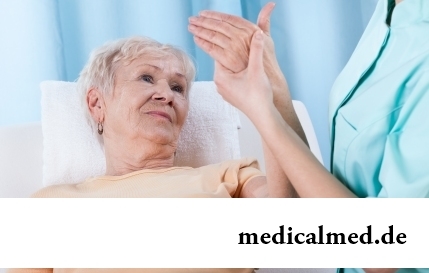
Osteoporosis this general disease which main sign is decrease in density of a bone tissue. On width распростран...
Section: Articles about health
No, probably, the person who would not have cold. Cold, cough, a headache – these symptoms are known to everyone. The peak of catarrhal diseases is the share of fall. SARS already came to schools and kindergartens, flu slowly makes the way to the cities, in a word, з...
Section: Articles about health
Shops of household appliances offer us the huge choice of various devices for the house. Whether there are among this abundance devices which not only facilitate house work, but also help to keep health of the person? Of course, and we will tell about them today....
Section: Articles about health
White teeth and the Hollywood smile – a dream of many people. Long time was considered that a plaque on teeth and change of their color – destiny of those...
Section: Articles about health
Extracorporal fertilization – one of the most modern methods of controlling with infertility. So far he already helped a significant amount of married couples to become happy parents. Usually to the EKO procedure difficult and very expensive, resort in those...
Section: Articles about health
The number of long-livers is very small. One person from 5 thousand lives up to age of 90 years, and the centenary boundary steps over only one of 20 thousand. However, doctors claim that each of us is quite able to affect own destiny. At the same time it is not so much about living as long as possible, how many about an opportunity to keep physical and intellectual activity and to avoid decrepitude. We will also talk about the ways helping to achieve this result today....
Section: Articles about health
Work of a brain is extremely complex and in many respects is not studied yet. It is confirmed also by the features of thought processes which are shown in...
Section: Articles about health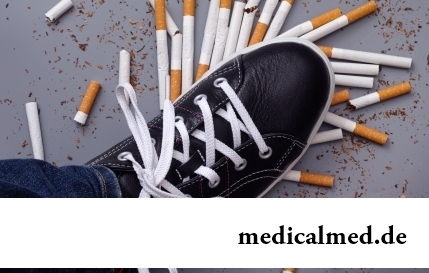
Deciding to get rid of an addiction, not all imagine what effects it is necessary to face. Process of refusal of smoking causes quite essential discomfort in most of people: differences of mood, sleep disorder, fatigue, decrease физич...
Section: Articles about health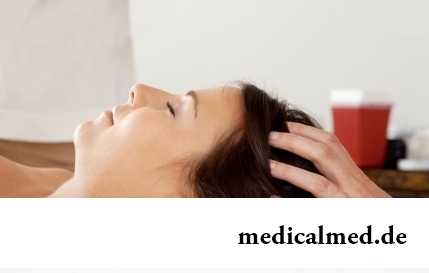
On the head of the person about one million hair follicles, or as they are called still, hair bulbs are located. At the time of the birth most of them is in the "sleeping" state, but within several weeks follicles become more active, and from them hair begin to grow. Intensity of this process is individual, and during life it can change. Genetic predisposition, a physical and emotional state, aggressive influence affects the growth rate of hair out of...
Section: Articles about health
Each of us repeatedly noticed that the people having the same passport age are sometimes not similar on one-years at all. One...
Section: Articles about health
It would seem, to buy drugs in Moscow does not make a problem – a drugstore, and not one, is available for each resident of the capital within walking distance. And, nevertheless, Internet drugstores become more popular – what it is possible to explain such phenomenon with? Actually m reasons...
Section: Articles about health
Each person has easy indispositions which he transfers "standing", trying not to ask for medical care. Arguments at the same time are adduced same: "it is a trifle, itself will pass", "I have too many important issues", "there are no wish to spend time for doctors", etc. At good shape of health, normal working capacity and lack of suspiciousness dislike for complaints to such problems is quite natural. It is not the most correct, but very widespread type of behavior. I am glad...
Section: Articles about health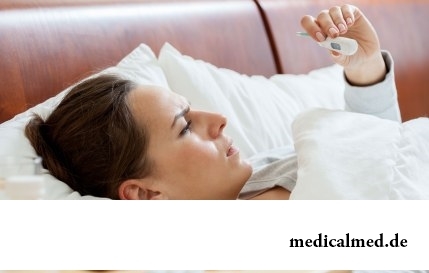
Subfebrile temperature call fervescence to 38 degrees, and subfebrile condition - existence of such temperature from above...
Section: Articles about health
Residents of big cities quite often have a disease which is known as the syndrome of chronic fatigue (SCF) today. This illness affects the people belonging to various social and demographic groups and living on all continents. Most of all SHU to a podverzha...
Section: Articles about health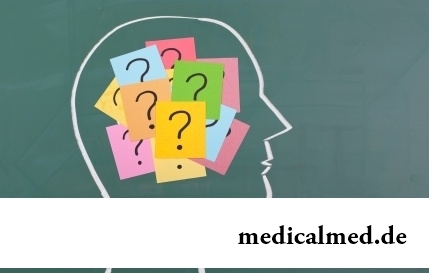
Memory is an ability of the central nervous system to fix, keep and as necessary to reproduce information on knowledge or skills received by the person or an animal during life. The mechanism of this process is up to the end not studied....
Section: Articles about health
Life of the modern woman is very difficult. Opportunities to realize itself are wide: it not only education and career, but also most differently...
Section: Articles about health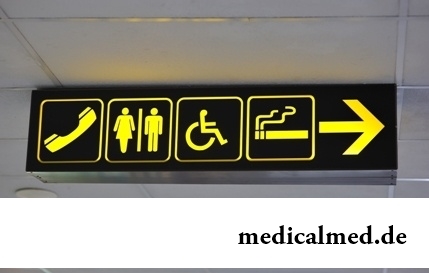
The saying "the rich do not know how the other half lives" is known to all. In a broad sense it is that we can not always understand the person whose features of a state are unknown to us. If with physiological characters of diseases the situation is more or less clearly (having noticed and...
Section: Articles about health
The summer of this year in Russia was very ambiguous. Regions suffered from a merciless heat, from pouring rains, the hail from time to time dropped out, then there was again a heat which alternated with rainfall again. Many people suffer from such sharp changes of weather. Even flu epidemics and a SARS were recorded....
Section: Articles about health
Not without reason doctors say that 90% of diseases begin or develop because of misoperation of intestines. Disturbance of its functions связ...
Section: Articles about health
Stroke (acute disorder of cerebral circulation) – one of the most widespread neurologic diseases. Annually in the world more than 6 million people die of this illness. From the survived patients about 80% become disabled people, and nearly a thirds from them впо...
Section: Articles about health
Feeding by a breast - the integral part of ideal motherhood allowing to come into contact with the kid and to create to it healthy immunity since early years. Nevertheless, this important process in life of mother and child can be saddened laktostazy − by a milk delay in a mammary gland. What main reasons for a laktostaz? How not to allow problems with breastfeeding? Let's consider 10 premises resulting in stagnation of milk at the nursing mother....
Section: Articles about health
According to data of World Health Organization, the cataract is diagnosed almost for 7% of the population of Earth. Statistics we get sick...
Section: Articles about health
Within several decades of our compatriots convinced that the use of butter nasty affects a condition of coronary vessels. As a result the reputation of a product was impaired thoroughly a little, and many almost ceased to include...
Section: Articles about health
Radiological methods of a research are applied in medicine more than hundred years, and thanks to them millions of lives were saved. In many cases without X-ray it is impossible to make exact idea of a condition of bodies and fabrics, it is correct to make the diagnosis. Nevertheless, many myths about researches such continue to exist. Let's consider the most widespread of them....
Section: Articles about health
Sugar - the digestible refined product which is not of special value for an organism of the modern person. Use...
Section: Articles about health
From sexual contacts each person can test insufficiently strongly expressed sexual desire or lack of satisfaction from time to time. However when it happens regularly, it is an occasion to think about health. Most of people does not hurry an obrashcha...
Section: Articles about health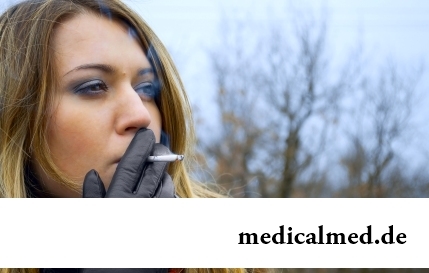
Dark circles (bruises) under eyes – a shortcoming with most of which often fight against the help of cosmetics (proofreaders, saloon procedures and so forth), eliminating only its visibility. However, according to doctors, skin around eyes – the indicator of many disturbances in an organism. To reveal them at early stages, without having disguised bruise, and having addressed its reasons – a task of each person who is regularly finding under with own eyes dark stains. Early detection and elimination of the disease lying in wasps...
Section: Articles about health
